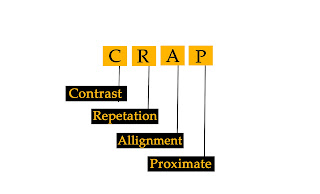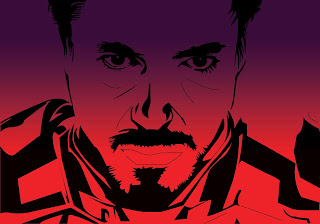Design Is Nothing But CRAP

The principle starts with Balance Balance is an equal distribution of weight. In terms of graphics, this applies to visual weight. That is determined by its size, darkness, or lightness, and thickness of lines. Empty space ( white space) and filled space. Text and images Color/ no colors and different colors. Line of vision direction Orientation and location of an element. Color- Hue, value, saturation, temperature. Black often weight more than white Dull tones are light weight, bright tones are valuable. Types of Balance Symmetrical- evenly distributed to the left and to the right, or to top and bottom of center. Asymmetrical- asymmetrical balance is an arrangement of unlike objects of equal weights on each side of the page. Color, value, size, shape and texture cam be used as balancing elements. Visual Hierarchy Organizing information and clarifying communication Emphasis Arrangement of visual elements according to the importance. ABC of




